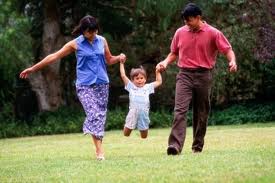From Kashmir to Kanyakumari, India’s divine land has bore many sages. The transcendental teachings of these esoteric and learned saints and monks have enlightened us in different garbs. As miracle workers, some of these orange clad holy beings have been wandering high in the Himalayas, while some have been literary genius residing in the plains and sharing their spiritual knowledge through their profound speeches or writings. Few others have sustained the sanctity of society through their ideals of social service.
In the diversity of their philanthropic mission, these sages have glorified humanity with love, selfless service, and contentment. The moral teachings of these saints are paragons that have helped us to upkeep our personal and social values and have sometimes even encouraged us to the path of self-realization. It would be iniquitous to deny that some of these ascetic qualities seem to be present in Anna Hazare who has created an enigma of social change throughout India. Anna’s values of simple living and high thinking have not only resurrected Mahatma Gandhi’s non-violent philosophy. But have also awakened a nation to the savagery and malice of man against man in the form of dishonesty, bribery, and exploitation of the weak and vulnerable.
In the diversity of their philanthropic mission, these sages have glorified humanity with love, selfless service, and contentment. The moral teachings of these saints are paragons that have helped us to upkeep our personal and social values and have sometimes even encouraged us to the path of self-realization. It would be iniquitous to deny that some of these ascetic qualities seem to be present in Anna Hazare who has created an enigma of social change throughout India. Anna’s values of simple living and high thinking have not only resurrected Mahatma Gandhi’s non-violent philosophy. But have also awakened a nation to the savagery and malice of man against man in the form of dishonesty, bribery, and exploitation of the weak and vulnerable.
Anna’s beliefs that ‘manav seva is madhav seva’ (service to man is service to God) imbibe similar principles as propounded by our ancient scriptures and swamis. Anna says that life is an illusion, which we often spend in self-indulgence. He believes that instead of internalizing the simple pleasures of life, we externalize them through obsession with material gains and selfish interests. Anna’s emphasis on moral values has indeed brought forth the essence of collective responsibility to social justice and has encouraged many to evolve out of caste bound prejudices. Inspired by Swami Vivekananda, Anna encourages everyone to have purity in thoughts and actions. He asserts that the more we have the capacity to bear other’s scorn, the better individuals we become by transforming our egoistic visage and molding it to serve the mankind.
Anna’s social movement imbues a monumental mission. It has kindled the need for change not just in polices and procedures, but has instilled the thought that ‘ask not what we can take from others, but what we can give to others.’ Such cognizance comes with self-introspection and with a conscious effort of limiting ourselves from an overwhelming desire for more, be it in terms of money, power, or earning privileges of life at the cost of oppressing the needy. Anna’s crusade for social change has certainly swayed the nation by his impulse for ‘parivartan,’ which he believes is initiated by altruistic actions to liberate ourselves from bigotry and injustice. With austere means of subsistence and abstinence from physical desires, Anna in many ways has truly lived up to the quote of Mahatma Gandhi, “Be the change you want to see in the world.”
Copyright © 2011 - Present dharbarkha.blogspot
Photo Courtesy: Manish Swarup/AP











